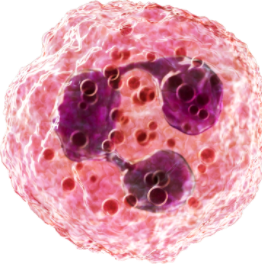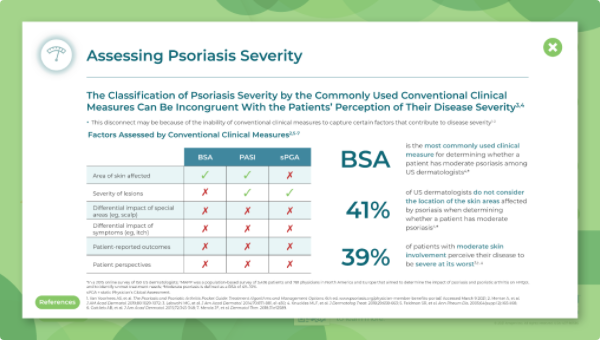Psoriasis Severity
The classification of psoriasis severity by commonly used conventional clinical measures can be incongruent with patients’ perception of their disease severity.1-3
Interact Deeper
Psoriasis can have a large impact on patients, even for patients with more moderate disease and limited skin involvement.1 There are several conventional clinical measures used to describe the severity of psoriasis, such as body surface area (BSA) and the Psoriasis Area and Severity Index (PASI).2 BSA describes the total body surface area affected by psoriasis, while PASI accounts for the BSA affected, as well as the intensity of redness, scaling, and plaque thickness.3 However, these clinical measures do not take into account the disproportionately large impact of special areas or symptoms such as itch, nor do they consider patient-reported outcomes or perspectives.2



Engage Deeper
The classification of psoriasis severity by the commonly used conventional clinical measures can be incongruent with patients’ perception of their disease severity.1-3
Learn MoreVan Voorhees AS, et al. The Psoriasis and Psoriatic Arthritis Pocket Guide: Treatment Algorithms and Management Options. 6th ed. www.psoriasis.org/physician-member-benefits-portal/. Accessed June 8, 2021.
Strober B, et al. J Am Acad Dermatol. 2020;82(1):117-122.
Menter A, et al. J Am Acad Dermatol. 2019;80(4):1029-1072.